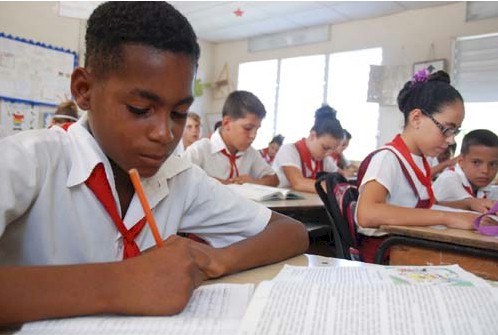Facts and Fact sheets
Blockade
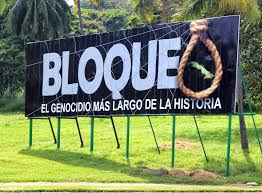 The US blockade or ‘el bloqueo’ as it is known in Cuba – is a collection of US laws and legislation which restricts Cuba's ability to have trade and normal relations with the US, and in some cases, other countries too.
The US blockade or ‘el bloqueo’ as it is known in Cuba – is a collection of US laws and legislation which restricts Cuba's ability to have trade and normal relations with the US, and in some cases, other countries too.
The US government first imposed economic, commercial, and financial restrictions on Cuba in October 1960 shortly after the 1959 Cuban Revolution. In February 1962 the blockade was extended to include almost all imports. Further legislation in the 1990s further strengthened and codified the blockade into US law, meaning that it can only be fully lifted by an act of Congress.
Although the economic aspect is central, the effects of the blockade are wide-reaching encompassing health, education, access to basic provisions as well as sports and culture.
Children’s hospitals face obstacles when it comes to acquiring specialist materials suitable for small children, most of which come from the US.
Though US sales of food to Cuba have been allowed since 2000, they are governed by the application of strict measures of supervision and a complicated and bureaucratic process. Cuba is forced by the blockade to spend vast sums of additional money to import food from other markets. For example, seed potatoes imported to Cuba must be imported with freight costs 50% higher than if they were bought from the US.
In 2009, Amnesty International called for the blockade against Cuba to be lifted, stating that “it is highly detrimental to Cubans' enjoyment of a range of economic, social and cultural rights, such as food, health and sanitation – particularly affecting the weakest and most vulnerable members of the population... (the blockade) is highly detrimental to Cubans' enjoyment of human rights”.
Cuba estimates that the cost of the blockade since its introduction is now over $753 billion*.
In October 2016, the United Nations General Assembly voted for the 25th consecutive year on a resolution calling for an end to the illegal blockade of Cuba. 191 countries - the largest amount in the vote's history - voted for an end to the blockade, and historically, zero countries voted against - just the US and Israel abstained. In October 2017, following the election of Donald Trump and his 'new' Cuba policy, the US and Israel returned to voting against Cuba's resolution; 191 countries voted in favour of ending the blockade, 2 against and zero abstentions.
Blockade not embargo
It is referred to as a blockade rather than an embargo because an embargo implies a legal, territorial arrangement which prohibits trade with a particular country. In contrast, a blockade goes beyond a legal, territorial arrangement and is applied extra-territorially – affecting Cuba’s ability to trade with other countries too.
The US 1996 Helms-Burton Act (1996) extended the blockade to apply to foreign companies trading with Cuba and penalised foreign companies allegedly ‘trafficking’ in property formerly owns by US citizens but expropriated by Cuba after the Revolution.
Helms-Burton codified the blockade as law, meaning the President could no longer terminate the policy; the power now lies with Congress.
The Protection of Trading Interests Act (1980) in the UK, makes it illegal for UK companies to comply with extra-territorial legislation, however this legislation is repeatedly ignored when it comes to Cuba. For instance, in December 2012, British bank HSBC was fined $665m for violating US sanctions against Cuba.
Why is the US blockading Cuba?
The blockade was a response to Cuba’s 1959 Revolution. During this time the properties of US citizens and corporations who were based in Cuba were expropriated and there was widespread re-nationalisation and land reform. The blockade was a reaction to these acts and aimed to eventually topple the revolutionary government.
Following statements by Cuba and the US on 17 December 2014, that the two countries would work to normalise relations, many people have incorrectly assumed that this means the blockade is over. However, despite embassies opening in Washington and Havana in summer 2015, the blockade is still very much in place.
More information
The blockade has not ended - An interview with Josefina Vidal in Granma
Read: The Economic War Against Cuba by Salim Lamrani
*According to Cuba’s 2016 report to the United Nations: "The economic damage caused to the Cuban people through application of the United States economic, commercial and financial embargo against Cuba, taking into account the depreciation of the dollar against the price of gold on the international market, amounts to US$ 753.688 billion, despite the decline in the value of gold compared to the previous period. At current prices, since the policy was introduced over 50 years ago, the embargo has inflicted quantifiable damage of more than US$ 125.873 billion."
Education
Education has been at the heart of the revolutionary process in Cuba and its educational systems are widely seen as amongst the best in the world.
Free education is a universal right up to and including higher education. Pre-Revolution, education was the privilege of the wealthy and there were few schools in rural areas.
A mass literacy campaign was initiated in 1960, designed to educate the entire population, with particular focus on the poor in rural areas who up until then had been neglected.
The Great Literacy Campaign of 1960-61 was run by almost 100,000 volunteers and saw illiteracy levels drop from 42% to 4% in under a year. Literacy rates now stand at 99.8%
More recent campaigns include Cuba's ‘Yo Si Puedo’ (Yes I can) teaching method has taught more than ten million people to read and write throughout the world.
World leaders on Education
- According to World Bank figures, Cuba spends more as a proportion of its GDP on education than any other country in the world. Between 2009-2013 it spent 12.9% compared to 6% in Britain and 5.4% in the US.
- "Mobile teachers" are deployed to homes if children are unable to go to school
- School meals and uniforms are free for everyone. Many schools provide free morning and after-school care for working parents with no extended family
- It is free to train to become a doctor in Cuba. There are now 23 medical schools in Cuba, up from only 3 in 1959 before the Cuban Revolution
More information:
Read: Check out our website for books on Education in Cuba
Read: Latin lessons: What can we learn from the world’s most ambitious literacy campaign? Nina Lakhani writes on Cuba's literacy campaigns for The Independent
Health
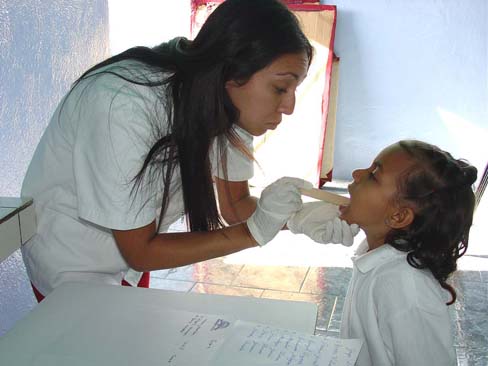
Since the Revolution Cuba has developed a world class health system that achieves developed country demographic indicators, on a fraction of the budget and despite suffering more than 50 years of blockade.
The Cuban health system focusses on health promotion and primary care in the community rather than relying on medicine alone, partly in response to having limited access to many of the medicines on the world market due to the US blockade. All doctors train to become primary care and community practitioners first; further specialisation comes later.
By locating family doctors in neighbourhoods and emphasising disease prevention, the health system – universal and free at all levels – makes care accessible and keeps people as healthy as possible, as long as possible, saving resources for more expensive treatments and interventions in the process.
“If the accomplishments of Cuba could be reproduced across a broad range of poor and middle-income countries the health of the world's population would be transformed” the Lancet Journal said in 2014.
Health statistics
- Cuba has the hightest ration of doctors to patients in the world at 6.7 per 1,000 people
- Life expectancy 80.45 years for women and 76.50 years for men
- The 2017 infant mortality was 4.0 per 1,000 live births - one of the best in the world
World leading health research
- In 2015, the World Health Organisation reported that Cuba had become the first country to eliminate mother-to-child transmission of HIV and syphilis
- Cuba has developed a lung cancer vaccine, CimaVax, which is currently undergoing further research
- Cuba has produced effective vaccines for cholera, malaria, meningitis B, hepatitis B and many more
Further Reading
Ebola control: the Cuban approach, the Lancet Journal reports on Cuban health education
Cuba calling: what this small island can teach the world about disease control, Connor Gorry writes in the Guardian
Internationalism
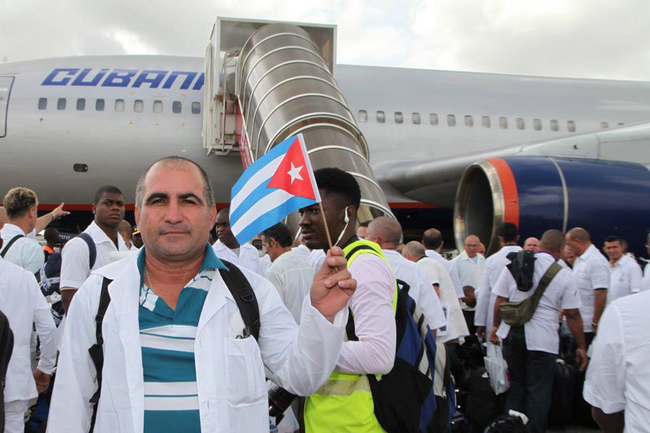
Despite the scarcities and difficulties caused by the blockade, Cuba remains true to its internationalist values of sharing the resources and expertise that they have with the rest of the world.
Cuba’s history of internationalism stretches back to the early days of the Revolution when in 1960 they sent a small emergency medical brigade following an earthquake in Chile. Che Guevera, assisted in a number of campaigns against colonialism and oppression in the 1960s, and in the 1970s and 1980s Cuba was at the forefront of international action against Apartheid in South Africa. On his release from prison Nelson Mandela declared, “if it were not for Cuba I would not be a free man today.”
In the last 30 years Cuban internationalism has focussed on health and education, especially emergency medical brigades and training medical students from developing countries. In 2015 there were 65,000 Cubans internationalists working in 89 countries. Cuba’s Latin America School of Medicine has also been responsible for training more than 30,000 medical students, who make up 68,000 professionals and technicians to have graduated on the island up 2015.
Cuba’s internationalism in numbers
- More than 250 voluntary and specialised health cooperation workers of the "Henry Reeve" medical brigade took part in the struggle against Ebola in West Africa
- Following the 2005 earthquake, Cuba sent 2,400 medical volunteers to Pakistan who were responsible for treating more than 70% of those affected
- Nine million people have graduated from the Cuban literacy programme Yes, I Can, (Yo Si Peudo) which teaches literacy learning with minimal resources
- Following the 2010 earthquake in Haiti, Cuban medical brigades sent the largest contingent and cared for 40% of the victims
- Following the two earthquakes in Nepal in May 2015, Cuba sent a brigade with their own medical equipment and a team of surgeons, anaesthetists, obstetricians, nurses and GPs.
- More than 4 million people have had their sight saved or restored with free eye surgery, part of Operation Miracle, an joint Cuban-Venezuelan initiative
- Since the Chernobyl disaster in 1986, 20,000 children have been treated for radiation-related illnesses free of charge in Cuba
More information
Cuba’s extraordinary global medical record shames the US blockade, Seamus Milne writes in the Guardian on Cuba's extraordinary medical internationalism
Read and watch: CSC’s shop has a wide selection of books and films on Cuba's international medical brigades.
Women
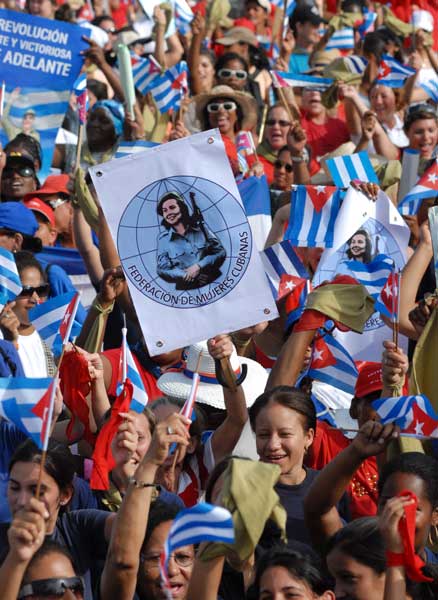 The “revolution within the Revolution”
The “revolution within the Revolution”
The high level of political, economic and social participation by women in Cuba and the rights guaranteed to women by the Revolution have placed Cuba as one of the best countries in the world for women.
Pre-Revolution, women’s experience in Cuba was one of oppression, exploitation, and hardship. Few women worked, few women were educated and a strong culture of machismo permeated all aspects of female experience.
This changed dramatically after the Revolution as gender equality was seen as an integral part of the Revolution and the principles of the new Cuban society. The fight for women’s rights was heralded as a “revolution within the Revolution” by Fidel Castro. The Cuban Constitution explicitly guarantees women economic, political, social, cultural and family rights and opportunities equal to those of men.
The Federation of Cuban Women (Federacion de Mujeres Cubanas, FMC) was established in 1960 to fight for equal rights and opportunities. This non-governmental organisation now has more than three million members, (80% of the female population) and is the largest mass organisation in Cuba and the biggest women’s organisation in Latin America.
Since the Revolution women have made huge advances in all fields of life from health and education to politics and economic empowerment. Examples of the success for the revolution towards women’s empowerment include:
- Women make up the majority of judges, attorneys, lawyers, scientists, technical workers, public health workers and professionals
- Cuba is ranked first in Save the Children's ‘Lesser Developed Countries’ Mother’s Index
- With over 53% women MPs, Cuba has the second highest percentage of female parliamentarians in the world
- Women receive 18 weeks of full salary during paid maternity leave, followed by 40 weeks at 60%
- The 1975 Family Code states that women and men must share household and family responsibilities equally
- The government subsidises abortion and family planning, places a high value on pre-natal care and offers ‘maternity housing’ to women before giving birth
- 64% of university places are occupied by women
- Female life expectancy in Cuba is 80.45 years – higher than in the United States
More information
Read: CSC’s shop has a wide selection of books and films on Women in Cuba
Trade Unions
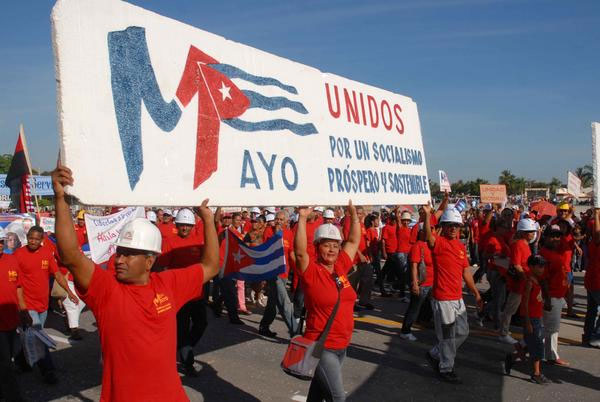 The Central de Trabajadores de Cuba (CTC, Cuban Workers Central) the Cuban equivalent of the TUC, was founded in 1939 and represents 17 sectoral unions.
The Central de Trabajadores de Cuba (CTC, Cuban Workers Central) the Cuban equivalent of the TUC, was founded in 1939 and represents 17 sectoral unions.
The CTC Congress meets every five years and is the highest authority for each national trade union. Congress is made up of representatives from each union elected in assemblies held by the grassroots organisations.
The Cuban Labour Code sets out the rights of all unions and workers. Unions have the right to participate in company management, to receive management information, to office space and materials, and facility time for representatives. Union agreement is required for lay-offs, changes in patterns of working hours, overtime or rest day working, and the annual safety report.
As one of Cuba’s ‘mass organisations’, unions also have a political role in Cuba and have a constitutional right to be consulted over employment law and have the right to propose new laws to the National Assembly.
Unions manage mass consultations over national government policy and respond to the National Assembly. Nearly 70,000 workplace meetings were convened to make proposals for the revised Labour Code, published in 2014. They also chair the commissions that present candidates for the National and Provincial Assemblies.
The law guarantees the right to voluntarily form and join trade unions. Unions are legally independent and financially autonomous, independent of the Communist Party and the state, funded by members’ subscriptions.
Legal worker rights protected by unions include a written contract, a 40-44-hour week, 30 days’ paid annual leave in the state sector, guaranteed weekly and unions have the right to stop work they consider dangerous, as part of comprehensive health and safety policy.
Industrial action is not prohibited in Cuba and – contrary to US propaganda – it never has been. There have been few disputes since the revolution in 1959, as conflicts are often resolved through negotiation and collective bargaining before industrial action becomes necessary.
More information
Read: What about the workers, Dr Steve Ludlam writes on the new Labour Code for CubaSí magazine.
Download Workers in Cuba: unions and labour relations an Institutions of Employment Rights pamphlet on Cuban trade unions here
Download our Trade Unions in Cuba Factsheet here
Elections
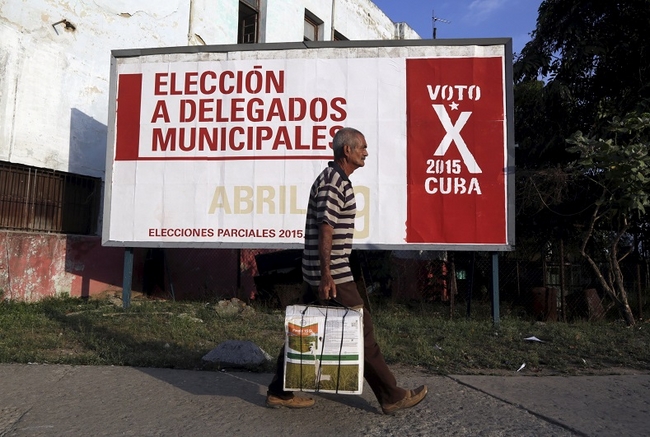
Elections to Cuba’s national parliament (the National Assembly) take place every five years and elections to regional Municipal Assemblies every 2.5 years.
Delegates to theNational Assembly then elect the Council of State which in turn appoints the Council of Ministers from which the President is elected. As of 2018 (the date of the next general election in Cuba), there will be a limit of no more than two five year terms for all senior elected positions, including the President.
The nomination process
The nomination process in Cuba aims to ensure that elected candidates are rooted in and supported by the local community:
- Nominations take place at community meetings where residents select candidates by a show of hands
- Anybody can be nominated to be a candidate. It is not a requirement to be a member of the Communist Party
- Candidates biographies are then displayed on community notice boards before the elections
- No money can be spent promoting candidates and no political parties (including the Communist Party of Cuba) are permitted to campaign during elections
- A minimum of two and maximum of eight candidates may stand in each ward election
National Assembly elections in 2013
The average age of deputies was 48 years old – five years younger than the global average age for MPs of 53.
More than 48% of seats in parliament are held by women – placing Cuba third in the world for percentage of female parliamentarians.
More information:
Read: CubaSi feature All in this Together: Cuba’s Participatory Democracy
Read: Cuba and its Neighbours: Democracy in Motion By Arnold August
Read: How does democracy work in Cuba? By Lauren Collins
Guantánamo
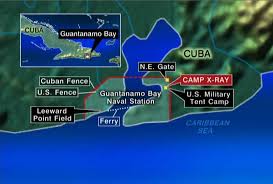
Guantánamo Bay is the oldest US military base outside of the United States. It is the only foreign military base maintained against the wishes of the host government and the only US military base with an indefinite lease.
The United States seized control of Guantánamo Bay at the end of the Spanish-American War in 1898 as it was of huge strategic importance for access to the Caribbean and Latin America. The infamous Platt Amendment in 1901 fortified the United States’ control allowing the US to retain its military presence.
Washington maintains that its continued payment of the lease affords it the right to use the land. However, the Cuban government refuses to accept the cheques and refutes US claims that the acquisition of the land is legitimate.
Although Guantánamo was seized long before the US blockade was introduced, the Helms-Burton Law in 1996, which further increased the blockade legislation under President Bill Clinton, implied that the US would perhaps return the territory of Guantánamo to Cuba if Havana met its demands for regime change.
Guantánamo has attracted international attention since Washington’s decision to transform the military base into the infamous extrajudicial detention facility - far outside the jurisdiction of the US legal system - to intern prisoners of the “war on terror”.

President Obama has said he wishes to eventually close down the detention centre, but maintains that the military base will not be returned to Cuba, despite the recent shift in US-Cuba relations, arguing that “ the issue of Guantánamo is not on the table.”
At the 2015 CELAC summit (Community of Latin American and Caribbean States), Cuban President Raúl Castro made it clear that the process of normalising relations would not be possible while the blockade still exists or “while they don’t give back the territory illegally occupied by the Guantánamo naval base.”
The continuing occupation of Guantánamo by the United States is a violation of international law, an affront to Cuba’s sovereignty and an impassable obstacle to reconciliation. Only when the US can forgo its territorial claim on Guantánamo can Havana be assured that Washington finally recognises Cuba’s right to self-determination.
More information
‘Yanquis Go Home’ a feature on the history and background of the base in CubaSí magazine
Watch: Al Jazeera report on Guantánamo
Read: Guantánamo – Why the illegal base should be returned to Cuba by Fidel Castro
Download: CSC Factsheet - Guantánamo
CSC leaflet - Close Guantanamo: End the US occupation of Cuban land
LGBT+ Rights

Like many other Caribbean and Latin American countries, Cuba's LGBT+ community have faced historical discrimination and homophobia and there is still work to be done to achieve equal rights for all.
Hundreds of years of Spanish colonialism, the influence of the Catholic church, and a culture of machismo helped to entrench homophobic attitudes deep in society which LGBT+ people are still fighting against today. However, in recent years there have been significant steps to rectify the mistakes of the past, to legislate to protect LGBT+ rights in society and try and educate the wider population to end discrimination and homophobia.
Following the decriminalisation of same sex relationships in 1979 a number of education initiatives and changes in the law marked the beginning of changes in government and societal attitudes, including the new Family Code passed in September 2022 which legalises same sex marriage and adoption.
Central to lobbying, raising awareness and educating against homophobia in the country has been the work of the government funded National Centre for Sexual Education (CENESEX). CENESEX campaigns for sexual equality and LGBT+ rights and is headed by director, Mariela Castro Espin, daughter of feminist revolutionary Vilma Espin.
CENESEX was established by the Ministry of Health in 1988 and has been instrumental in changing legislation and attitudes, including changes to the Family Code in 2022 which recognised same sex marriage and adoption. CENESEX recognises that there is still much work to be done, however huge achievements have been made both in terms of reforming legal structures and challenging cultural norms. These achievements are not only impressive in themselves, but especially so when the regional context of Latin America and the Caribbean is considered which is heavily influenced by generations of ‘machismo’.
The impact of the blockade and aggressive US policy on the LGBT+ community and all Cubans should never be forgotten or played down. It impacts on all areas of Cuban society, access to healthcare, essential medication and education materials.
A timeline of advancing LGBT+ rights in Cuba
1979 Same sex relationships decriminalised
1988 CENESEX established to provide education on sexuality, sexual health and the recognition and guarantee of sexual rights of the population
1993 Strawberry and Chocolate, a ground-breaking film set in 1979, about a young communist man’s relationship with a gay writer – explored tolerance, inclusion and homophobia and marked a watershed in Cuban society
2006 Cuban television begins running a soap opera featuring gay characters for the first time.
2007 Cuba starts celebrating the International Day Against Homophobia (IDAHO) with a two week programme of awareness raising, educational, and cultural events
2008 Gender reassignment surgery is made freely available
2012 Adela Hernandez is the first known transgender person to be elected to public office, after being elected as a delegate to the municipal government in the province of Villa Clara
2013 The new Labour Code includes anti-discrimination laws based on sexuality in employment for the first time.
2015 IDAHO features the involvement of the CTC (Cuban Workers Federation) for the first time, with a key focus being the creation of workplaces free from stigma and discrimination
2019 A new constitution is passed which expressly prohibits discrimination based on sexual orientation and gender identity and deletes the previous definition of marriage as a union between a man and women. Marriage is now defined as a social and legal institution and just one form of family organisation, recognising the right of everyone to found a family.
2019 First transgender marriage takes place
2021 The Cuban parliament unanmimously approves the draft of the new Family Code (updateing the 1975 document) in December. The document includes same sex marriage and adoption. CENESEX and the Federation of Cuban Women were part of the commission which drew up the draft document.
2022 Following a referendum and public consulation, on 26 September the Cuban population votes by 67% to approved the new Family Code which includes same sex marriage and adoption, as well as many changes to enshrine women's reporductive rights and more rights for minors and vulnerable groups within sociiety.

